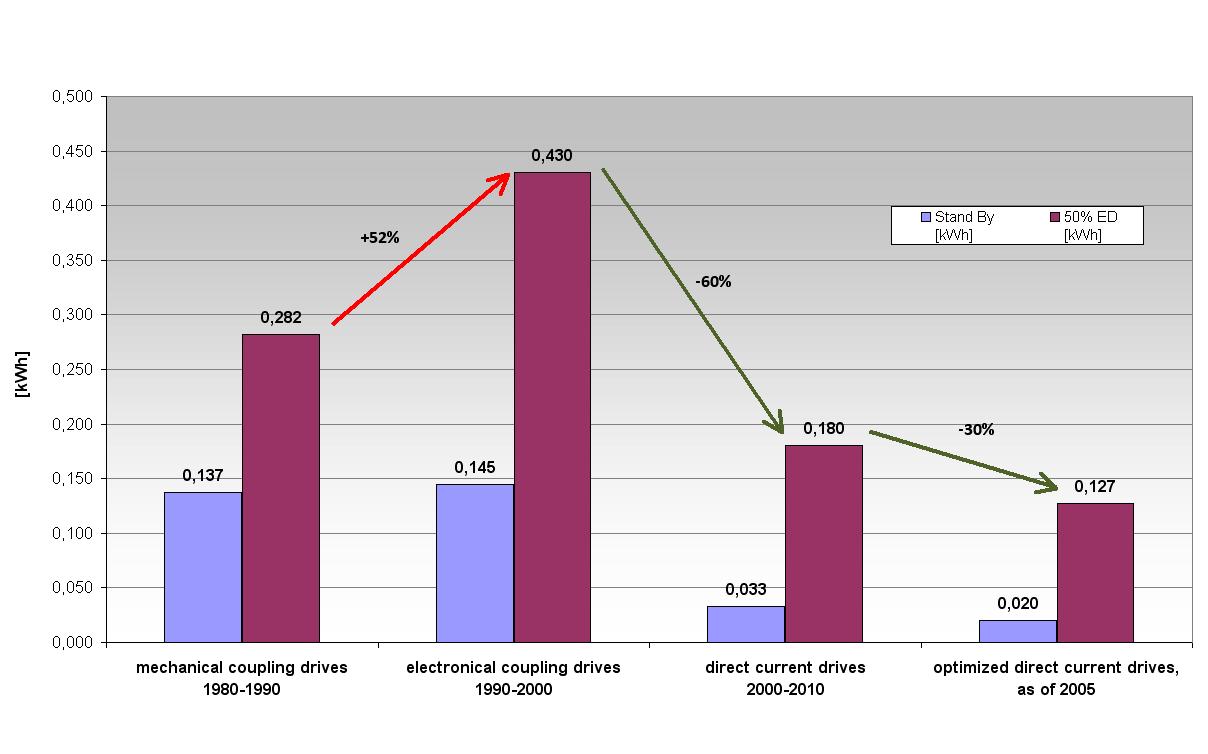Feb 3, 2011:
Energy saving sewing machines
In the field of mechanical engineering energy consumption – besides the wage costs - has become an important factor when calculating the production costs. There is one branch which apparently does not follow this trend although we are permanently surrounded by its end products. Apart from fuel and food not many products are observed by the customers with such a high degree of price sensitivity. We are talking about our basic need No. 2 right after nutrition, i.e. the production of clothing and shoes.
We have all become used to it that compared to other living costs there are hardly any price
increases with regard to clothing. On the contrary, sales prices are rather on the decrease. At the
end of the eighties the price for a standard jeans amounted to approx. 50 DM; today it is
offered at 30 to 50 € inspite of additional complex washing processes.
The main reason are certainly lower wage costs due to the production in Asian low-cost
countries. On the other side lower environmental standards and subsidized energy costs help to keep
the prices down. Nevertheless e.g. the sewing machine manufacturers have continuously worked on the
drive technology in order to become more efficient.
Initially the change from drives with
mechanical coupling to those with
electronically regulated coupling took a completely different direction. In the
90ies higher speeds combined with more automatic functions led to a
substantial increase of electric energy consumption
in the first instance. On average
, a medium-heavy duty industrial sewing machine built in 1993 used
430W/h instead of
280W/h in the years before.
Around the turn of the millennium
direct current drives for sewing machines were developed by which a big step
towards energy saving could be realized. This technology reduced the consumption to
180W/h, partly even with an extended scope of functions. Usually the drive is
conventionally mounted and separately connected to the sewing machine via a toothed belt. As of
2005, new machine generations are equipped with integrated direct current motors. Now the stator is
part of the machine casing and the rotor is directly press-fitted to the main shaft. Thus, the
efficiency factor could be further increased and today the consumption is reduced to approx.
130W/h on average.
As far as the drives are concerned, an economic limit seems to have been reached for the
moment which can only be undercut by the use of “exotic” materials and new lubrication concepts.
Here the development is caught in an area of tension between:
1. Reduction of the moving masses – lower energy consumption for acceleration and deceleration. But nevertheless high torque levels for large penetration power.
2. Low-friction bearings – lower breakaway torques and lowest resistances. But nevertheless no oil stains on the material and a long maintenance-free durability.3. Cost-sensitive – The sewing machine represents a low-wage workplace.
As a rule of thumb it can be said:
The accepted investment in the work equipment is seldom higher than the annual wage costs
of the operator.
When calculating with wage costs of 1,200 € per year there is little scope left for
investments in energy saving technology. And what is more, kWh prices lower than 6 ct are not
really an incentive to invest in energy saving.
The following calculation is often set up:
300 days x 12h x 0,130 kWh x 0,06 ct = 28 € energy costs per year / workplace
An extrapolation for many an Asian country results in
energy costs of 28 € per year and per workplace. This means that the share in the
production costs without material proportion amounts to approx. 3% only. With all due respect to
environment, CO² and the protection of natural resources:
Little chances to amortize the additional technical expenditure = little incentive for
the customer
Changes using the example of a Dürkopp Adler sewing machine for leather work



